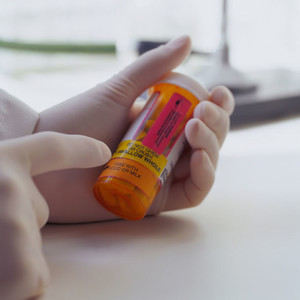The case for cheap generics
Pharmaceutical expenditure has risen rapidly in Abu Dhabi in recent years as a result of the preference for novel and patented drugs, exacerbated by limited demand-side measures. This has resulted in pharmaceutical expenditure currently at approximately Euros 63.5 per head of population per year in Abu Dhabi; higher than the average of Euros 41 per head of population across the Gulf States, and appreciably higher than approximately Euros 16 per head of population among the other Arab countries. Overall, pharmaceuticals consume approximately 35% of the total healthcare expenditure in Health Authority Abu Dhabi (HAAD), appreciably higher than typically seen among Western European countries [1-6] as well as Saudi Arabia [7].
What is not working in Abu Dhabi
Recent initiatives in HAAD to enhance the quality and efficiency of pharmaceutical care include greater provision of drug information to physicians and greater encouragement of pharmacovigilance. Initiatives also include formal procedures and guidance for new drugs to be incorporated into the HAAD formulary, the development of a unified prescription form and subsequently the formalisation in 2009 of a generic policy, as well as guidance to physicians on ways to reduce medication errors.
A case history from Abu Dhabi [8] was written after an initial analysis showed that pharmaceutical expenditure actually increased following those initiatives surrounding generics [9]. The authors decided to investigate two particular cases, those of proton pump inhibitors (PPIs) and lipid-lowering drugs before and after combined reforms on generics and to calculate potential savings based on ‘best practice’ among Western European countries.
An uncontrolled before-and-after observational study of utilization and expenditure of PPIs, statins and ezetimibe between 2004 and 2010, as well as up to 12 months before the first generics policy, to one year after the second generics policy, was carried out. Utilization was converted to defined daily doses (DDDs; 2011 DDDs) and DDDs/1,000 inhabitants per day. Expenditure/DDD was calculated for omeprazole and simvastatin. It was found that PPI utilization rose by 6.5-fold from 2004 to 2010, principally driven by increased utilization of patent-protected PPIs, although more recently esomeprazole utilization has stabilised. Similar changes were seen for statins.
Some strategies that work in Europe [10]
In some European countries patients are required to pay the difference for a more expensive drug than the cheapest generic drug in addition to any basic co-payment for the prescription.
Physicians have been directed to prescribe products in a class in a particular sequence based on their prescribing efficiency, such as using generics as first line, where acknowledged as standard treatment. Demand-side measures include prescribing restrictions (enforcement) encouraging, for example, the prescribing of multiple-sourced statins, such as simvastatin, while restricting patented statins, such as atorvastatin, to second line, as seen in Austria, Finland and Norway [5, 10-14].
Utilization of esomeprazole versus generic PPIs has been appreciably limited in recent years in Sweden and the UK as all PPIs are seen as essentially similar.
Prescribing restrictions limit the prescribing of patent-protected statins (atorvastatin and rosuvastatin) to second line in Austria in patients not achieving target lipid levels with generic statins; this has appreciably reduced their use. Various studies have now demonstrated that patients can be successfully switched from atorvastatin to simvastatin without compromising care. Studies have shown that both patent-protected and generic statins produce essentially similar reductions in cholesterol levels in practice.
Finally, generics could be priced 70% below the corresponding originator prices, to mirror some of the practices in European countries.
Conclusion
Introduction of best practice would have reduced PPI expenditure in 2010 by 32.8 million United Arab Emirates dirham (AED) or Euros 6.26 million and statins by over 27 million AED (Euros 5.15 million).
Related articles
Suggestions for increasing generics use in Abu Dhabi
Maximising the potential of generics in Abu Dhabi
References
1. Coma A, Zara C, Godman B, et al. Policies to enhance the efficiency of prescribing in the Spanish Catalan region: impact and future direction. Expert Rev Pharmacoecon Outcomes Res. 2009;9:569-81.
2. Godman B, Shrank W, Wettermark B, et al. Use of generics – a critical cost containment measure for all healthcare professionals in Europe? Pharmaceuticals. 2010;3:2470-94.
3. Godman B, Bucsics A, Burkhardt T, et al. Insight into recent reforms and initiatives in Austria; implications for key stakeholders. Expert Rev Pharmacoecon Outcomes Res. 2008;8(4):357-71.
4. Sermet C, Andrieu V, Godman B, et al. Ongoing pharmaceutical reforms in France; implications for key stakeholder groups. Appl Health Econ Health Policy. 2010;8(1):7-24.
5. Godman B, Shrank W, Andersen M, et al. Comparing policies to enhance prescribing efficiency in Europe through increasing generic utilization: changes seen and global implications. Expert Rev Pharmacoecon Outcomes Res. 2010;10(6):707-22.
6. Wettermark B, Godman B, Andersson K, et al. Recent national and regional drug reforms in Sweden: implications for pharmaceutical companies in Europe. Pharmacoeconomics. 2008;26(7):537-50.
7. Al-Jazairi AS, Bhareth S, Eqtefan IS, Al-Suwayeh SA. Brand and generic medications: are they interchangeable? Ann Saudi Med. 2008;28(1):33-41.
8. Abuelkhair M, Abdu S, Godman B, et al. Imperative to consider multiple initiatives to maximize prescribing efficiency from generic availability: case history from Abu Dhabi. Expert Rev Pharmacoecon Outcomes Res. 2012 Feb;12(1):115-24.
9. Abuelkhair M, Abdu S, Godman B, Fahmy, S, Gustafsson LL. Drug utilisation study experiences from Abu Dhabi suggest multiple demand side measures will be needed to enhance prescribing efficiency; implications for the future. Pharmacoepidemiol Drug Saf. 2011;20:S208-9.
10. Godman B, Shrank W, Andersen M, et al. Policies to enhance prescribing efficiency in Europe: findings and future implications. Front Pharmacol. 2010;1:141. doi: 10.3389/fphar.2010.00141
11. Godman B, Sakshaug S, Berg C, Wettermark B, Haycox A. Combination of prescribing restrictions and policies to engineer low prices to reduce reimbursement costs. Expert Rev Pharmacoecon Outcomes Res. 2011;11(1):121-9.
12. Godman B, Burkhardt T, Bucsics A et al. Impact of recent reforms in Austria on utilization and expenditure of PPIs and lipid lowering drugs; implications for the future. Expert Rev Pharmacoecon Outcomes Res. 2009;9(5):475-84.
13. Sakshaug S, Furu K, Karlstad Ø, et al. Switching statins in Norway after new reimbursement policy: a nationwide prescription study. Br J Clin Pharmacol. 2007;64(4):476-81.
14. Martikainen J, Saastamoinen L, Korhonen M, et al. Impact of restricted reimbursement on the use of statins in Finland: a register-based study. Med Care. 2010;48(9):761-6.
Permission granted to reproduce for personal and educational use only. All other reproduction, copy, retransmission or reprinting of all or part of any ‘Content’ found on this website is strictly prohibited without the prior consent of the publisher. Contact the publisher to obtain permission before redistributing.








 0
0











Post your comment